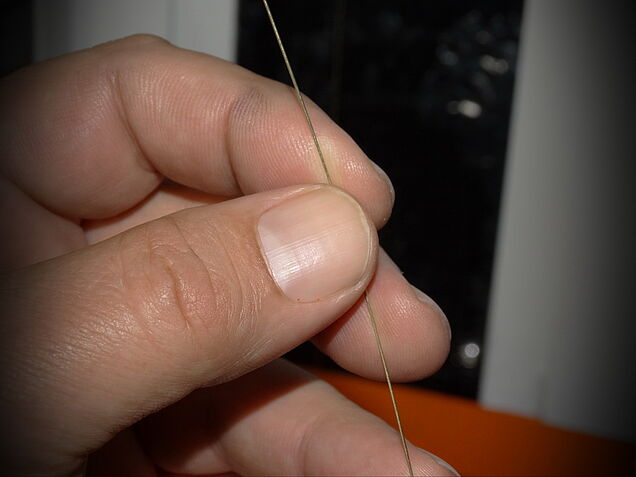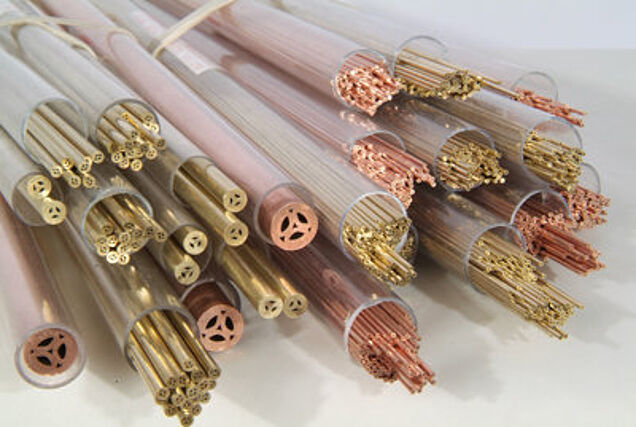THE BASICS OF HIGH-SPEED EDM HOLE DRILLING
High-speed EDM hole drilling was designed especially for fast, accurate small- and deep-hole drilling applications. Small holes that were once almost impossible to drill by conventional machine tools are now being performed with ease. With the capability of drilling through virtually any conductive material, the use of this technology is continually expanding.
Initially shops were using this technology specifically for start holes in wire EDM jobs. Because of this technology, workpiece materials are being sent out for heat treating prior to drilling the start hole. This removed two major problems: having to program, locate and drill the holes by conventional machine methods in the “soft” workpiece prior to heat treat and by heat treat the workpiece before drilling, all the stresses are being removed prior to the drilling process. As this process became more widely known, test burns were being done in more than just hardened tool steel; tungsten carbide, aluminium, stainless, titanium, brass and inconel were being tested. High-speed EDM hole drilling applications began to expand to mould and part manufacturing-injection nozzles, oil drain holes, hydraulic cylinders and dowel pins, as well as turbine blades, ball bearings and safety wire holes in hex nuts, to name a few.
The EDM Drilling Process
The process consists of using a precision tubular electrode (generally brass or copper) mounted into the drill chuck located on the “Z” axis and held in location on top of the workpiece by the ceramic guide. The top of the workpiece is located and the drilling depth is set. The electrode rotation is turned on and the deionized water solution, which is pressurized between 30 and 120 kg/cm2, is sent through the tubular electrode as a flushing agent. The power supply parameters are set-which normally consist of on-time, off-time, peak current and amount of capacitance. At this point, the discharge is turned on to begin the drilling cycle. At the end of the drilling cycle, the discharge is turned off and the “Z” axis is retracted above the workpiece.
Drilling Times
Drilling times are based on the hole size and type of material.
A few samples of possible speeds for reference:
| Material | Electrode Dia. | Drill Depth | Machining Time |
| Alloy Tool Steel | 0,5mm | 12,5mm | 25 to 35 seconds |
| 0,5mm | 25mm | 50 to 60 seconds | |
| 1,0mm | 25mm | 55 to 65 seconds | |
| Tungsten Carbide | 0,5mm | 12,5mm | 4 to 5 minutes |
| 0,5mm | 25mm | 8 to 9 minutes | |
| Aluminum | 0,5mm | 12,5mm | 40 to 50 seconds |
| 0,5mm | 25mm | 90 to 100 seconds | |
| 1mm | 70mm | 3 minutes |
Observing the mentioned times explains why high-speed EDM hole drilling has become an alternate method to conventional machining in mould manufacturing. In addition, this method of drilling produces burr-free holes, which results in the elimination of secondary deburring processes.
Today, Novidrill II&III can use distilled water/tap water as the flushing agent, which opens new and very economically application possibilities in the medical field. With continued improvement in this technology, more and more applications are being seen on the horizon-it has become a whole new method of manufacturing moulds and parts.

Drilling Smaller, Deeper, and More Precise Holes
EDM holemaking technology is being driven by demand for smaller, deeper and more precise holes produced as fast and as consistently as possible
EDM holemaking technology is being driven by demand for smaller, deeper and more precise holes produced as fast and as consistently as possible. What essentially started with conventional EDM hole-popper machines has evolved into advanced EDM drilling systems that further enhance the capabilities of their predecessors in terms of hole size, depth, surface finish and accuracy, as well as in process speed, reliability and simplicity.
In the past, it was a truly significant accomplishment to drill a 0.15 mm diameter hole 50 mm deep in hardened steel using a 0,15mm diameter electrode on an EDM hole-popper machine. Today’s technology makes it possible to drill the same hole upwards of twice as deep or drill one that is 0,15 in diameter 150 mm deep and varying in size and straightness no more than 0.025 mm from its entrance to exit. Plus, being able to do it using only one electrode and little, if any, operator intervention.
Present EDM drilling systems are fundamentally a merging of EDM hole-popper technology with that of die-sinker EDMs. At the heart of these precision machines is the latest digital generator technology adapted from the die-sinker side of the family. These state-of-the-art digital generators are much more efficient with higher output that delivers speed, consistency and precision. And they consume much less energy!
Novidrill's Intelligent Fuzzy Logic Power Generator provides precise spark control for the EDM drilling machines with different parameter settings for the various stages of the drilling process and according to where the electrode is in the hole. It is this functionality of our controller that also helps to reduce electrode wear, which, in turn, allows for deeper drilling, increased speed and accuracy and higher surface-finish quality.
Spark control is accomplished via software in the digital fuzzy logic generator that modifies or adjusts spark behavior as the electrode enters a hole and when it exits—a function often referred to as entrance and breakthrough protection. These Novidrill protection functions prevent instability during hole exiting, shorten actual electrode exiting time, eliminate back-wall striking and help maintain hole diameter size at the point of exit.
These capabilities of our Novidrill are what allow our modern EDM drilling system to accurately, efficiently and automatically process those workpieces involving multihole and/or multielectrode size operations. For increased EDM drilling productivity, the goal is to generate as many holes as possible or drill as deep as required using the least amount of electrodes. The more a generator can help reduce electrode wear, the better. Plus, less wear on electrodes allows them to cut faster and more accurately by eliminating ‘bullet nosing’ of their tips.

Superalloys and EDM
Their strength is their weakness
One valuable characteristic that separates electrical discharge drilling machining from more conventional machining methods is its ability to drill through materials that are very resilient with great efficiency. Altough many of these materials are natural elements such as tantalum and niobium, most are elemental mixtures called superalloys. These superalloys generally share a face-centred cubic crystal structure, a structure that results in a great strength through its many chemical bonds. The following materials are used by many of the customers in a wide variety of applications.
- Hastelloy – Used in the pressure vessels of nuclear and chemical reactors, Hastelloy is a nickel-based alloy that resists corrosion.
- Invar – A material originally developed by Swiss physicist Charles Èdouard Guillaume, Invar is a nickel and iron composite with an anomalously low coefficient of thermal expansion. Because of its dimensional stability, it is commonly found in precision instruments.
- Kovar – Kovar is an alloy designed to match the coefficient of thermal expansion of glass. This allows it to be used as a seal with glass, lending it to use in glass instruments containing a vacuum, such as light bulbs and vacuum tubes.
- Niobium – The characteristics of niobium lend it to use in many different alloys, with varying applications. It can be added to steels to improve its general strength, used in superalloys to increase hardness, and in superconducting magnets.
- Tantalum – An element with extremely similar characteristics to niobium, tantalum’s applications overlap quite a bit with those of niobium. Like niobium, it is used in corrosion-resistant materials, while its high melting point lend it to use in vacuum furnaces.
- Stellite – A corrosion-resistant and very hard material, Stellite is used for machine parts and tooling. They are also used for valve components in internal combustion engines.
The same properties that make superalloys so valuable in extreme engineering projects make them very difficult to work with, and many of these materials would in fact be useless if not for machining methods like electrical discharge machining. Electrical discharge machining operates on principles that sidestep the physical properties of superalloys that make them so robust and does not drill by physical contact. In facilitating the manipulation of superalloys, EDM-drilling gives engineers the freedom to use whatever material suits the application, even materials that resist conventional machining.

